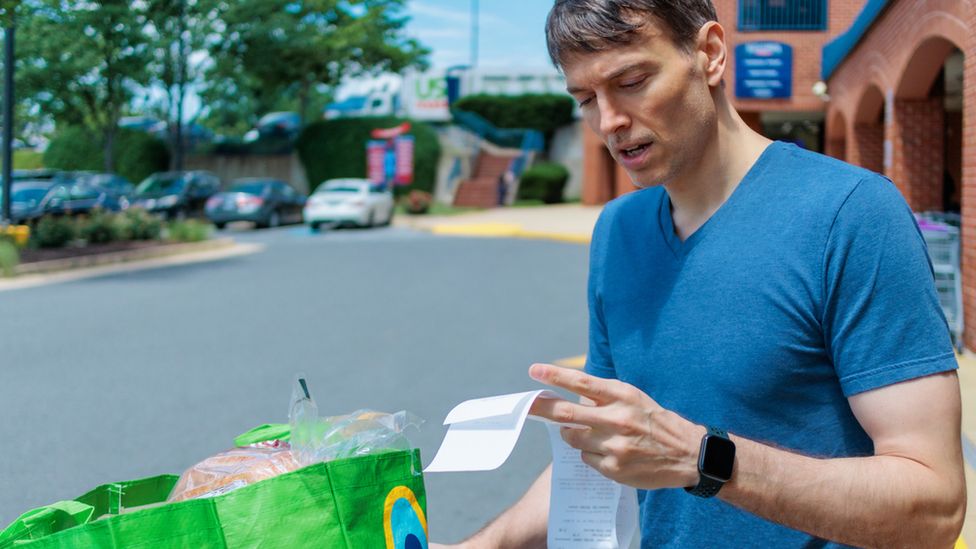Inflation rose by 3% in the year to June but US interest rates are expected to rise again.

The rate of price growth in the US dropped to its slowest pace in more than two years last month, helped by cheaper used cars.
Inflation rose 3% in the year to June, according to data, from 4% in May.
Inflation has fallen sharply from a peak of more than 9% in June 2022 and the latest reading marks the slowest pace since March 2021.
The figures suggest a succession of interest rate rises have punctured soaring prices.
However, analysts still expected the US Federal Reserve to raise rates again this month.
Brian Coulton, chief economist at Fitch Ratings, said June's slowdown in US inflation was "really only a small step in the right direction."
"In the context of a still tight labour market and sticky wage growth, the Fed's recent concerns about inflation persistence are not going away, " he said.
The rise in US inflation in June was driven by higher housing costs, the Labor Department said.
In contrast, prices for used cars and trucks dropped while the cost of food stuffs such as pork, milk and eggs declined. Many households had been struggling with higher grocery bills after the war in Ukraine disrupted global food supplies.
The figures underscore the relatively rapid progress the US has made in curbing price increases, especially compared to the UK, where inflation hit 8.7% in the year to May despite a number of interest rate rises.
Danny Blanchflower, a former member of the Bank of England's rate-setting committee who is now professor of economics at Dartmouth, said that the US economy was more nimble than the UK.
He said the UK economy had been hit by Brexit, which has made it more difficult for firms to do things like switch supply chains to lower cost alternatives.
"There's been a Covid shock for everybody and there's been a war shock for everybody," he said. "The question is what distinguishes the UK from everywhere else and I would say the answer is Brexit."
In the US, the central bank has raised interest rates from near zero to 5% since March last year in a bid to cool the economy and ease the pressures that had been pushing up prices.
Policymakers at the Federal Reserve have signalled that they are likely to raise rates again this month and many expect further increases later in the year.
Officials have pointed to concerns about so-called core inflation. This measure strips out food and energy costs, which can vary month-to-month.
Core inflation has shown signs of stalling at a pace that would keep inflation higher than the bank's 2% target.
But the latest data from the US Labor Department showed core inflation that was lower than expected. It rose by just 0.2% between May and June, the smallest increase since August 2021.
Core inflation slowed to 4.8% in the year to June, from 5.3% in the 12 months to May.
The three major share indexes in the US opened higher following the report.
"A buoyant growth rally suggests that the market is seeing a faster exit out of this elevated rate environment, "said Geir Lode, head of global equities at Federated Hermes Limited.
"Today's results will be taken very positively by the Fed, but they will want to make sure they stave off further inflation rises in the near future, and, as such, we do not anticipate easing before the middle of next year."